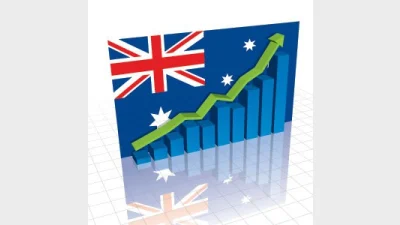The Australian equities challenge



The high degree of concentration of the Australian market is a particular problem in constructing Australian equity portfolio blends.
Chart 1 (please see Money Management October 19, 2006 page 26) compares the breakdown of the S&P/ASX200 with the S&P500 in the US, and highlights the high degree of concentration of the domestic benchmark.
The ASX benchmark is clearly dominated by the top five and top 10 stocks, which account for 31 per cent and 43.2 per cent of the index respectively.
This compares with the top five and top 10 weights of 15.3 per cent and 24.7 per cent for the S&P500.
The limited size of our stock universe is further highlighted by comparison of market capitalisations of the 100th listed stock in each of these two indices.
For the S&P/ASX200, the 100th stock has a market cap of only $1.5 billion — tiny when compared with the 100th stock in the S&P500 at US$25.9 billion.
The implication of the small size and high levels of concentration of the domestic market is that there tends to be very high levels of overlap between Australian equity managers’ portfolios, particularly those that have a strong benchmark focus.
This poses a serious challenge for portfolio blenders — the challenge, ironically, is that of having too little risk, rather than too much risk in your portfolios.
Investors would do well to heed Warren Buffet’s comment: “Wide diversification is only required when investors do not know what they are doing.”
Portfolio blenders need to find ways to mix managers without over-diversifying their portfolios.
To illustrate this problem of over-diversification, a blend of four Australian equity managers was constructed consisting of a mix of a traditional value style manager, a traditional growth style manager, and two style-neutral or ‘core’ managers.
Chart 2 (please see Money Management October 19, 2006 page 26) shows the resulting portfolio holdings (as at end December 2004) and illustrates the low numbers and low levels of active risk being taken in the portfolio, with very few stock positions with active weights larger than 1 per cent in absolute size.
The ex-ante risk of this fully active portfolio was 1.5 per cent. With such low levels of active risk, it is unlikely that the portfolio will generate significant levels of alpha, certainly not enough to justify the high levels of active fees that investors will be paying for the underlying active managers.
The problem of over-diversification is also exacerbated by size. Multi-manager providers with large funds under management face a significant challenge, as they expand the number of managers used in their Australian equity blend, so the levels of risk decline further.
On the flip side, such large multi-managers have difficulty in limiting the number of managers they use, as this results in very large fund sizes being given to underlying managers, which in many cases aren’t in a position to absorb and manage effectively.
There are a number of ways of minimising this problem of over-diversification.
The first and obvious is by limiting the number of managers employed in the blend.
Typically, for traditional Australian equity managers, the optimal number would be somewhere in the region of four to five managers.
The ideal number to use will depend on the style and levels of concentration in the portfolios of the underlying managers.
The second way of reducing over-diversification is through customisation of the strategies that the underlying managers employ.
As a multi-manager, we do not ourselves invest in managed funds; rather all our manager investments are structured around separate accounts or mandates.
A mandate is simply an agreement between the client and the underlying manager whereby the manager manages the assets on behalf of the client, while the client retains ownership of the assets.
By using mandates, one is not limited to buying the standard off-the-shelf products of the manager.
In particular, one can customise more concentrated portfolios with the underlying managers, and many Australian equity managers have now moved to add such concentrated or high conviction portfolios into their mainstream processes.
These mandates may limit the number of stocks that the manager invests in, or simply focuses the manager’s stock selection on their best ideas, so limiting the degree of overlap across managers’ portfolios.
With these more concentrated mandates the optimal number of managers in a blend could be expanded beyond five.
Steve Gamerov is head of Investment Solutions at Advance Asset Management .
Recommended for you
In this episode of Relative Return Insider, host Keith Ford and AMP deputy chief economist Diana Mousina break down the spike in inflation numbers and what it means for the possibility of a rate cut as we move into the new year.
In this episode of Relative Return Insider, host Keith Ford and AMP economist My Bui explore Prime Minister Anthony Albanese’s trip to the US and the critical minerals deal stemming from his meeting with President Donald Trump.
In this episode of Relative Return Insider, host Keith Ford and AMP chief economist Shane Oliver unpack the latest unemployment numbers and what they mean for a rate cut, as well as how the latest flare-up in the ongoing US–China trade dispute has highlighted the remaining disparity between gold and bitcoin.
In this episode of Relative Return Insider, host Keith Ford and AMP chief economist Shane Oliver take a look at the unfolding impacts and potential economic ramifications of the US government shutdown and the surge in gold and bitcoin prices.







